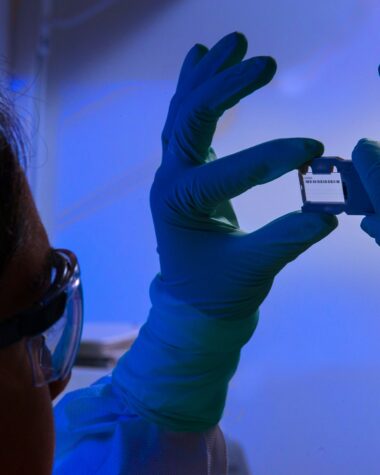Xeris Biopharma Holdings Inc. (NASDAQ:XERS) is a specialty pharmaceutical company dedicated to unlocking the full potential of therapeutics through innovative formulation science. Headquartered in Chicago, Illinois, Xeris was founded with a mission to make medicines easier to use and more accessible by developing ready-to-use injectable and liquid-stable formulations that eliminate the need for reconstitution, refrigeration, or complex administration. Through its proprietary technology platforms—XeriSol™ and XeriJect™—the company transforms how biologics, hormones, and small molecules are delivered, paving the way for safer, more convenient treatment options across a broad range of therapeutic areas.
The company has evolved from an early-stage biotech into a fully integrated commercial operation with three FDA-approved products generating consistent revenue. These include Gvoke®, a ready-to-use glucagon injection for severe hypoglycemia; Keveyis®, the first FDA-approved treatment for primary periodic paralysis; and Recorlev®, an oral therapy for endogenous Cushing’s syndrome. Each of these treatments addresses niche, high-need markets where patient outcomes are heavily influenced by ease of administration, speed of action, and reliability. By focusing on diseases that are often overlooked by larger pharmaceutical companies, Xeris has carved out a defensible and scalable position in the biopharma space.
In addition to its commercial portfolio, Xeris is advancing a promising pipeline that includes XP-8121, a once-weekly subcutaneous therapy for hypothyroidism currently in clinical development. This candidate, developed using the XeriJect™ platform, exemplifies the company’s commitment to long-acting, patient-centric therapies that improve compliance and quality of life. Xeris’ pipeline strategy targets both internal development and external collaboration opportunities, positioning the company as both a developer and potential partner in the delivery and reformulation of existing molecules.
Xeris Biopharma also benefits from a strong and diversified shareholder base, with over 54% of the company owned by institutional investors. This level of institutional backing reflects deep market confidence in the company’s commercial execution and long-term vision. Additionally, insider ownership remains significant, further aligning management’s interests with those of shareholders. Combined with a growing retail investor base, this ownership structure gives the company stability and credibility in the public markets.
Since its public listing, Xeris has steadily expanded its market presence, driven by consistent revenue growth, improving operating margins, and a strategic focus on lifecycle innovation. The company’s unique formulation expertise and scalable platforms allow it to take existing therapies and transform them into more effective, accessible, and patient-friendly products. This approach not only increases adoption and market penetration but also supports broader access and adherence—factors critical to long-term healthcare outcomes.
With a commitment to addressing unmet medical needs, a proven ability to execute commercially, and a differentiated formulation technology that can be applied across therapeutic categories, Xeris Biopharma is positioned as a rising force in the pharmaceutical industry. Its strategy of combining proprietary delivery science with high-impact therapeutics offers a unique and sustainable model for growth in both rare and chronic disease markets.
Insider Ownership Shows Alignment with Shareholders and Confidence in Execution
Beyond institutional faith, what truly bolsters investor confidence in Xeris is the visible skin in the game from company insiders. CEO John Shannon personally holds approximately 0.6% of outstanding shares, and insiders collectively own $37 million worth of stock in a company with an $804 million market capitalization. That may seem modest in percentage terms, but in dollar value, it represents a substantial personal commitment to the company’s long-term success.
This insider ownership adds an extra layer of alignment between management and shareholders. Executives who are also equity holders are far more likely to make decisions that optimize long-term shareholder value over short-term optics. And in the case of Xeris, this alignment comes at a time when its revenue growth is accelerating, its pipeline is advancing, and its commercial portfolio is gaining traction across three FDA-approved therapies.
Investors often watch insider activity for signs of insider conviction — and recent buying activity suggests that those with intimate knowledge of the company’s operations are bullish on what lies ahead.

CHECK THIS OUT: Exact Sciences (EXAS) Just Made Cancer Detection 100x Easier! and Soleno Therapeutics (SLNO): The Biotech Company That Could Make You Rich.
Retail Investors Have a Voice — and They’re Backing the Upside
While institutions and insiders carry weight, retail investors also play a meaningful role in Xeris’ shareholder base. As of the latest reports, the general public owns about 41% of the company. This isn’t a speculative meme stock crowd — these are long-term retail investors who understand the value of FDA-approved products, revenue guidance beats, and a differentiated technology platform.
The fact that individual investors hold such a significant stake means that public sentiment and social momentum still have an influence on the stock’s valuation. When combined with institutional ownership, this hybrid structure creates a powerful tailwind when positive catalysts — such as earnings beats, analyst upgrades, or clinical trial advancements — align.
An Expanding Revenue Base with Room for Re-Rating
From a fundamentals perspective, Xeris is far ahead of most of its small-cap biotech peers. The company is not just sitting on intellectual property — it has three commercial-stage products: Gvoke (for severe hypoglycemia), Keveyis (for periodic paralysis), and Recorlev (for Cushing’s syndrome). These therapies are addressing underserved markets with limited competition and high medical need, which gives Xeris strong pricing power and the potential to expand its market share through targeted marketing and physician education campaigns.
In its most recent earnings call, the company reported over $60 million in quarterly revenue and reaffirmed full-year guidance of $255–275 million, a strong indicator of consistent execution. Adjusted EBITDA came in positive, and free cash flow is moving in the right direction — a rare combination for a biopharma company at this stage of growth.
Wall Street analysts continue to set bullish price targets in the $6–7 range, suggesting double-digit upside from current levels. If its pipeline assets, particularly XP-8121 for hypothyroidism, continue to progress, those targets could move even higher.
Strategic Ownership Structure Makes Xeris a Resilient, Scalable Growth Story
The strategic composition of Xeris’ ownership — with 54% institutional, 41% public, and insiders holding a healthy $37 million stake — creates a balanced, resilient setup for long-term growth. Institutions provide liquidity and market validation. Retail investors contribute loyalty and upward momentum. Insiders offer strategic clarity and execution discipline. When these three factions are aligned, it becomes harder for speculative volatility or macro headwinds to derail the story.
And unlike many biotech names that are years away from product launch, Xeris is already monetizing real products, showing solid year-over-year revenue growth, and improving gross margins. This combination of commercial traction, credible management, and solid backing makes Xeris Biopharma not just a speculative bet — but a foundational position for investors seeking exposure to a mid-cap biotech with asymmetric upside.
Conclusion: A Bullish Case Built on Execution, Ownership Confidence, and Scalable Innovation
Xeris Biopharma is proving that innovation in delivery platforms, when applied to overlooked or underserved therapeutic spaces, can yield not just regulatory approval — but commercial success. The company’s robust ownership structure reflects the confidence of institutional investors, the conviction of insiders, and the belief of retail holders. With multiple revenue-generating products, a platform capable of producing future blockbusters, and a strategic roadmap to 2030 and beyond, Xeris is quietly building one of the most compelling stories in specialty biopharma today.
The stock remains undervalued relative to its growth trajectory, and with further clinical catalysts and potential partnership deals on the horizon, investors may soon look back at current levels as a rare opportunity in an otherwise crowded biotech landscape.
READ ALSO: Johnson & Johnson (JNJ) can be the Next Trillion-Dollar Stock and Boston Scientific (BSX) Just Signed a $45M Deal—Here’s What It Means for Investors.








